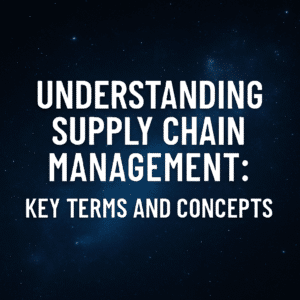Every organization, at some point, faces the need for change—whether it’s through a technological transformation, process optimization, or shifting business goals. However, achieving a successful transformation requires more than just new systems or strategies. The real challenge lies in how effectively your organization manages change, engages employees, and navigates through potential resistance. To ensure this process is smooth and successful, the key to success lies in defining a change strategy that is specifically tailored to your organization’s unique needs. And this all begins with an organizational assessment.
Table of Contents
ToggleWhy Organizational Assessments Are Crucial
The need for a tailored change strategy is fundamental. Many organizations mistakenly attempt to apply one-size-fits-all solutions to complex problems, which often leads to fragmented and ineffective change efforts. The ultimate goal should always be to design a strategy that not only addresses the business challenges at hand but also fits the unique characteristics, culture, and goals of your organization. This is where an organizational assessment plays a vital role.
An organizational assessment gives you a clear, data-driven picture of how ready your organization is for change and highlights the areas that may cause friction during the transformation process. Far from just an academic exercise, this step allows you to create a roadmap based on real insights into how your employees work, communicate, and engage with the organizational culture.
One of the most significant benefits of conducting an organizational assessment is that it helps you proactively identify potential sources of resistance. While it’s natural to expect some level of pushback when introducing change, understanding where, why, and how that resistance may manifest is crucial.
Many organizations enter change efforts with an overly optimistic view, assuming employees will be excited about new tools, processes, or opportunities. While this may be true in the initial phases, the reality is that resistance will likely emerge as the transformation process progresses. The challenge isn’t identifying whether resistance exists but rather understanding the scope of it and uncovering its root causes.
An organizational assessment provides the clarity needed to anticipate resistance and build strategies to address it effectively. Whether it’s due to cultural challenges, misaligned leadership, or communication breakdowns, identifying these factors early enables you to avoid costly delays or disruptions.
How Organizational Assessments Work
At Third Stage Consulting, we approach organizational assessments using a comprehensive, dual-method approach that combines both quantitative surveys and qualitative focus groups. This combination offers a rich, multi-faceted understanding of your organization, ensuring that no critical aspect is overlooked.
Quantitative Surveys
The first track of our assessment approach involves anonymous quantitative surveys. These surveys collect detailed, numerical data on various aspects of the organization. Employees are asked about topics such as leadership style, communication practices, collaboration levels, historical experiences with past change initiatives, and the overall culture within the organization.
The beauty of using anonymous surveys is that they encourage candid, honest feedback. Employees are more likely to share unfiltered opinions when they know their responses will not be tied to their identity. This is essential for gathering accurate insights into the organizational dynamics that could impact the success of a transformation initiative.
The data derived from these surveys helps benchmark your organization against both internal and external standards. It provides clear metrics on areas of strength as well as those that require improvement. Additionally, it allows for continuous tracking over time. Organizational assessments are not one-time events; they should be conducted regularly to monitor progress and adjust strategies as needed throughout the transformation.
Qualitative Focus Groups
In addition to the quantitative survey data, we conduct qualitative focus groups to gain deeper insight into the organizational dynamics that influence change. These focus groups typically involve smaller, cross-departmental teams, and in some cases, representatives from various geographic locations if the organization is large and complex.
Focus groups provide an opportunity to dig into the less tangible aspects of the organization, such as the underlying culture, leadership styles, internal politics, levels of collaboration, and communication gaps. It’s in these focus groups that we uncover the more nuanced elements of the organization that might not show up in a survey. For example, we may discover perceptions of leadership that aren’t being openly discussed or the impact of departmental silos that could undermine collaboration during a transformation.
A Comprehensive Approach
By combining both the quantitative (survey) and qualitative (focus group) methods, we get a complete picture of the organization. This approach allows us to assess not only the readiness for change but also how the organization’s culture and structures might contribute to (or hinder) the transformation effort.
Analyzing the Results
Once the surveys and focus groups are completed, the next critical step is analyzing the results. This is where the true value of the organizational assessment lies. It’s not just about gathering data—it’s about interpreting that data to uncover actionable insights that will shape the change strategy.
One of the first things we look for during the analysis is identifying areas where resistance to change is most likely to arise. It’s essential to understand that resistance isn’t necessarily a reflection of the people in the organization—it’s often a result of systemic issues, such as a lack of clear communication, poor leadership, or misalignment between departments.
For example, if a particular department is feeling overwhelmed and under-resourced, it may be more resistant to change, especially if they believe the changes will further complicate their workload. Conversely, departments with clear leadership, adequate resources, and a collaborative culture may be more open to adopting new processes and technologies.
In this phase, we also look at whether there is a misalignment between the leadership team and employees. If employees perceive that leadership is out of touch with the realities on the ground, they may resist change due to a lack of trust or confidence in the leadership’s ability to manage the transition.
Tailoring the Change Strategy
The ultimate goal of the organizational assessment is to tailor a change strategy that fits your organization’s specific needs. Based on the findings from the assessment, we can develop a customized strategy that directly addresses the identified issues.
For example, if the assessment reveals that certain departments are more resistant than others, the change strategy can include targeted communication plans or additional training for those specific teams. If the assessment identifies a leadership gap, the strategy might involve enhancing leadership communication or providing leadership development resources.
Additionally, the organizational assessment helps to align the change strategy with the organization’s broader digital transformation goals. If the business is aiming for increased efficiency through automation, but employees are resistant to the change, the strategy should address their concerns, provide support, and demonstrate the benefits of the new system in a way that resonates with them.
Continuous Monitoring and Adaptation
A change strategy is not set in stone. Once the strategy is in place, it’s essential to track progress over time. Organizational assessments should not be one-off efforts; they need to be revisited periodically to monitor the organization’s evolving needs and the success of the change initiative.
This iterative process allows for continuous feedback loops, so that the strategy can be adjusted as necessary. If resistance begins to emerge in new areas, or if certain tactics aren’t working, the strategy can be refined to address those shifts. The key here is flexibility—organizations must be ready to adapt their change strategies based on real-time data and feedback.
Conclusion
Defining a tailored change strategy that fits your organization’s needs is essential for a successful transformation journey. An organizational assessment is the first and most important step in this process. By identifying potential resistance, understanding cultural dynamics, and analyzing both quantitative and qualitative data, an assessment enables you to create a more precise and effective change strategy.
Instead of relying on generic, off-the-shelf solutions, an organizational assessment allows you to develop a customized approach that directly addresses your organization’s unique challenges and opportunities. This ensures that the change process is not only smoother but also more aligned with the long-term goals of the organization.
For any organization looking to successfully manage change, conducting an organizational assessment should be a priority. By doing so, you will set the stage for a more effective, efficient, and sustainable transformation journey.

How Can We Help with your Business Transformation: people-first
At Third Stage Consulting, we are passionate about empowering organizations to successfully navigate the complexities of digital transformation. Whether you’re embarking on a new transformation journey or aiming to optimize your current processes, our expert team is committed to providing comprehensive support throughout every phase. From initial strategy development to execution and beyond, we work closely with you to ensure that your transformation goals are met efficiently and effectively.





